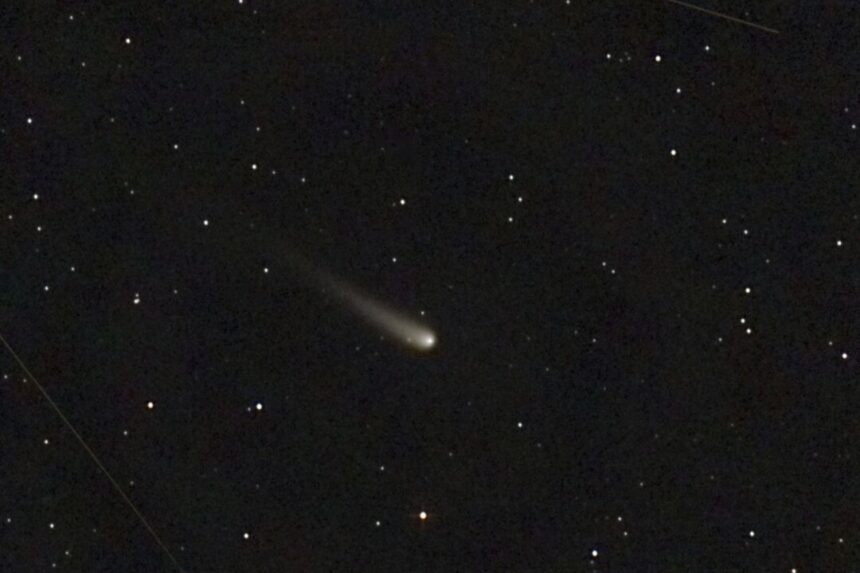A rare and bright comet is heading toward Earth from the outer reaches of the solar system and will make its closest pass on Saturday. Comet Tsuchinshan-Atlas should be visible through the end of October, weather permitting. It should be bright enough to see with the naked eye, but binoculars and telescopes will provide a better view.
Comets are frozen leftovers from the solar system’s formation billions of years ago. They heat up as they approach the sun, releasing their characteristic tails. In recent years, notable comets like Neowise in 2020 and Hale-Bopp and Hyakutake in the 1990s have made memorable flybys.
The comet, also known as C/2023 A3, was discovered last year and is named after observatories in China and South Africa. It originated from the Oort Cloud beyond Pluto and will not return for another 80,000 years if it survives its current journey.
To view comet Tsuchinshan-Atlas, observers should look to the west about an hour after sunset on a clear night. The comet should be visible from both the northern and southern hemispheres.
By Adithi Ramakrishnan






